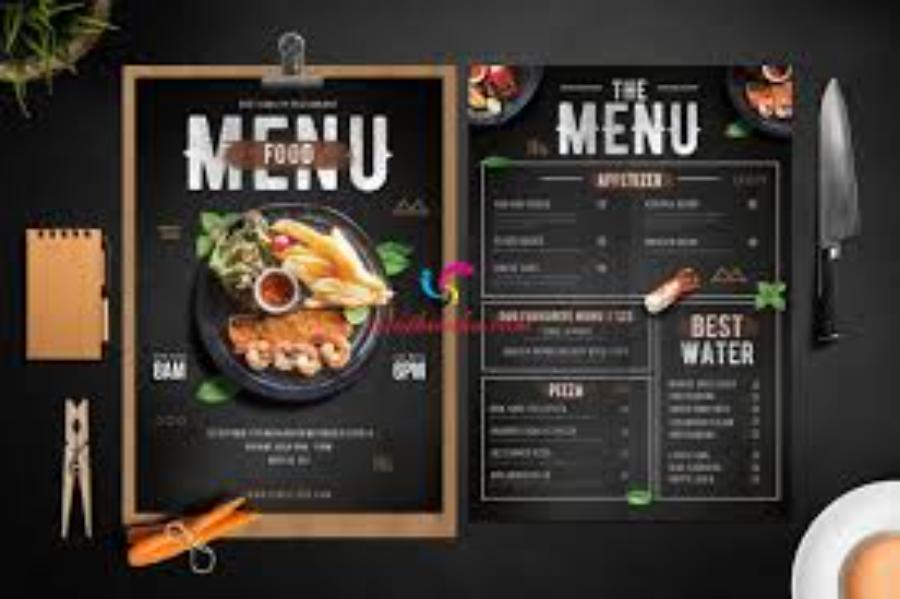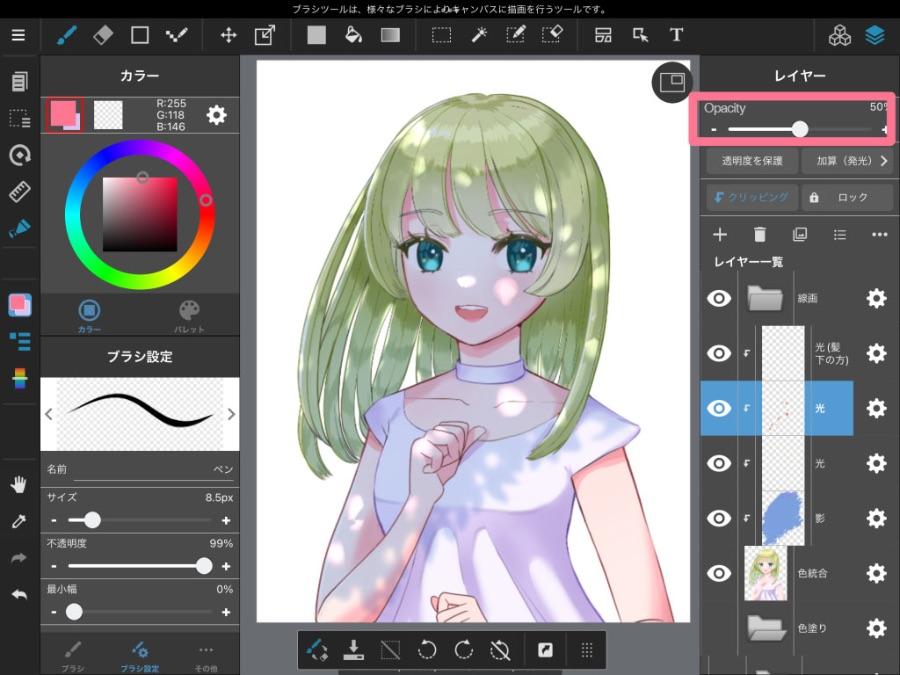Best Selling Products
Tips on How to Design Your Own Restaurant Menu with 8 Extremely Simple Tips
Nội dung
- 1. Learn about menu design
- 1.1. Choose menu style and size
- 1.2. Choose color and design style
- 1.3. Create a logical structure for the menu
- 3. Tips on how to design a standard menu
- 3.1. Why Restaurant Menus Are Important
- 3.2. Understand the Restaurant Style Before Designing the Menu
- 3.3. Choosing the Right Font
- 3.4. Arrange Menu By Clear Category
- 3.5. Use of Illustrations
- 3.6. Ensure the Menu is Easy to Read and Understand
- 3.7. Ensure brand consistency, create connection with customers
- 3.8. Pay attention to printing materials and durability
- 4. Conclusion
Design your own simple restaurant menu with 8 tips to improve customer experience. Learn how to create an impressive menu for your restaurant today through the following article!

A restaurant menu is not just a list of dishes but also a tool to convey the style and values of the restaurant. Designing an attractive menu will create a strong impression on diners from the first time. In the article below, Sadesign will provide detailed tips and instructions so that you can create a perfect menu that is easy to see and understand.
1. Learn about menu design
A restaurant menu is an important element that helps customers easily choose dishes. It not only acts as a list of dishes but also a tool to help the restaurant convey its style, professionalism and story. A beautiful and reasonable menu can significantly increase revenue and make customers feel comfortable when choosing dishes.
.jpg)
To design an effective restaurant menu, you need to pay attention to some basic elements such as structure, form and the message you want to convey. Every restaurant has its own style, so there is no one-size-fits-all formula, but there are some basic principles that you can refer to.
1.1. Choose menu style and size
One of the first factors to decide when designing a menu is its style and size. Menus can be designed in the form of a book, a flat board or a flyer, depending on the space and style of the restaurant.
Book Menu : This is a popular menu style in fine dining restaurants. Book menus give you plenty of space to display your dishes and add decorative elements.
Flat panel menu : Often used in fast food or modern restaurants. Flat panel menus are easy to change, easy to transport and do not cost much.
Leaflet Menu : This is a good option for restaurants that have a frequently changing menu or have a lot of options for customers. You can print dishes on different sheets of paper and easily change them.
The size of the menu is also important, you need to make sure that the menu is large enough to display all the dishes but not so large that it becomes cumbersome for customers. Typically, a suitable sized menu will be able to fold into A4 or A5 sheets.
1.2. Choose color and design style
Color is an important element in creating an appealing menu. Different colors will create emotions and reflect the style of the restaurant. For example, red can stimulate the appetite, while blue creates a fresh and pleasant feeling.
Warm colors (red, orange, yellow) : Often used in fast food restaurants or dynamic dishes. These colors create a sense of enthusiasm and stimulate appetite.
Cool colors (blue, green) : Suitable for elegant style restaurants or restaurants specializing in healthy dishes.
Black, white or gray : Used a lot in luxury restaurants. They show elegance and luxury, easy to coordinate with other decorative details.
The menu design style should match the interior and theme of the restaurant. If your restaurant has a classic space, you can design the menu with vintage decorative details, using classic fonts. If your restaurant has a modern style, use a simple, flat and easy-to-read design.
1.3. Create a logical structure for the menu
The structure of the menu is a decisive factor in whether customers can easily find dishes or not. A scientifically arranged menu will help customers easily choose without feeling tired when having to scroll through a long list.
.jpg)
Typically, a restaurant menu will have the following sections:
Appetizers : Light and easy to eat dishes to start the meal.
Main Course : Main dishes, which can be divided into groups such as meat, fish, chicken, vegetables, etc.
Dessert : Sweets, fruit or cake.
Beverages : Soft drinks, wine, cocktails, etc.
Make sure you divide your dishes clearly, use easy-to-understand and attractive titles so that customers don't have to spend too much time searching.
3. Tips on how to design a standard menu
A standard menu design is not simply about making it look nice, but also a combination of many factors to ensure it is easy to understand, easy to see and suitable for the restaurant space. Below are 8 tips to help you design a standard menu easily.
3.1. Why Restaurant Menus Are Important
The menu is one of the factors that determine the success of a restaurant. More than just a list of dishes, the menu is also the way the restaurant communicates with customers. It reflects not only the quality of the dishes but also the brand, style and space of the restaurant. A beautifully designed and easy-to-understand menu will create a strong impression, keeping customers coming back again and again.
A menu is more than just a list of dishes; it is part of a comprehensive marketing strategy. Designing a restaurant menu requires not only creativity but also an understanding of the market, customer needs, and the actual operations of the restaurant.
3.2. Understand the Restaurant Style Before Designing the Menu
Before you start designing, the first thing you need to do is understand the style of your restaurant. Whether it is a fine dining restaurant or a casual eatery, the menu will reflect this.
A menu for a luxury restaurant will have a sophisticated design, using soft, harmonious colors, expressing luxury and class. On the contrary, for a rustic restaurant, the menu can be simpler, more familiar and easier to understand. To make the menu match the restaurant style, pay attention to the color, font, paper material and illustrations.
3.3. Choosing the Right Font
Fonts are an important element in menu design. Beautiful and easy-to-read fonts will help customers easily find their favorite dishes. Professional designers recommend choosing 1 to 2 fonts for the menu, avoiding using too many fonts to avoid confusion.
.jpg)
A popular choice for fine dining restaurants is serif or classic fonts. However, if your restaurant has a modern style, a sans-serif font would be a better choice.
3.4. Arrange Menu By Clear Category
To make it easy for customers to find dishes, your menu needs to be divided into clear categories such as: Appetizers, Main dishes, Desserts, Drinks. This helps customers save time and enhance their experience.
Also, don’t forget to arrange the dishes in a logical order. Popular dishes should be placed in easy-to-see locations, near the top or in the middle of the menu, where diners will most likely see them first.
3.5. Use of Illustrations
One of the effective ways to attract customers is to use beautiful illustrations for dishes on the menu. However, it is necessary to use images correctly. Images are not only aesthetic but can also help diners easily identify dishes, thereby deciding to choose dishes more quickly.
Keep in mind that the illustrations need to be sharp, high quality, and reflect the actual dish. Don’t use images that are artificial or don’t represent the food your restaurant serves.
3.6. Ensure the Menu is Easy to Read and Understand
A restaurant menu should not only be beautiful but also easy to read and understand. Don't make it difficult for customers to find their favorite dishes. Dishes should be clearly described with easy-to-remember names. Avoid using too many confusing terms or uncommon words.
The menu design should be such that even diners unfamiliar with the restaurant's cuisine can easily choose dishes. Dish descriptions should be brief but full of necessary information.
3.7. Ensure brand consistency, create connection with customers
The menu is not only a tool for customers to choose dishes, but also a part of the brand identity. Therefore, the menu design needs to be consistent with the restaurant's colors, fonts, logo and brand image.
.jpg)
By aligning your menu design elements with other elements of your brand, customers will find it easier to recognize and associate your restaurant with you. This helps to increase brand recall in the minds of customers.
3.8. Pay attention to printing materials and durability
Finally, the material of the menu also affects the durability and luxury feel of the restaurant. You can choose to print the menu on high-quality paper, cardboard or plastic, depending on the type of restaurant and its intended use. High-end restaurants often use high-quality, durable materials, while fast food restaurants can choose lightweight, cost-effective materials.
4. Conclusion
Designing a restaurant menu is not only a creative job but also an art of expressing the restaurant's brand and style. A beautiful, easy-to-read menu that accurately represents the value of the dishes will help your restaurant leave an impression on customers.
Hopefully, the 8 simple tips above will help you create an impressive and effective restaurant menu. If you want to design a unique and attractive menu, don't forget to contact SaDesign - we will help you create the most professional, sophisticated and perfect menu designs for your restaurant!












































